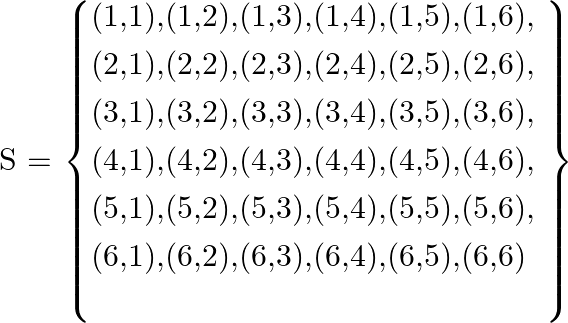Assume that ![]() and
and ![]() are the outcomes possible when a die is thrown.
are the outcomes possible when a die is thrown.
Given that a pair of die is thrown, then the sample space will be,

![]() : getting an even number on the first die.
: getting an even number on the first die.
The sample space of event ![]() is,
is,

![]() : getting an odd number on the first die.
: getting an odd number on the first die.
The sample space of event ![]() is,
is,

![]() : getting the sum of the numbers on the dice
: getting the sum of the numbers on the dice ![]() .
.
The sample space of event ![]() is,
is,
![]()
(v) ![]() and
and ![]() are mutually exclusive.
are mutually exclusive.
As, ![]()
![]()
Thus, ![]() .
.
Hence, ![]() and
and ![]() are not mutually exclusive.
are not mutually exclusive.
Therefore, the given statement is false.
(vi) ![]() ,
, ![]() ,
, ![]() are mutually exclusive and exhaustive.
are mutually exclusive and exhaustive.
We know, the sample space of
 ,
,
 and
and

![]()
So, there are no common elements in ![]() and
and ![]() .
.
Thus, ![]() ,
, ![]() are mutually exclusive.
are mutually exclusive.
![]()
![]()
So,![]() ,
, ![]() are not mutually exclusive.
are not mutually exclusive.
Thus, ![]() ,
, ![]() ,
, ![]() are not mutually exclusive and exhaustive.
are not mutually exclusive and exhaustive.
Therefore, the given statement is false.
